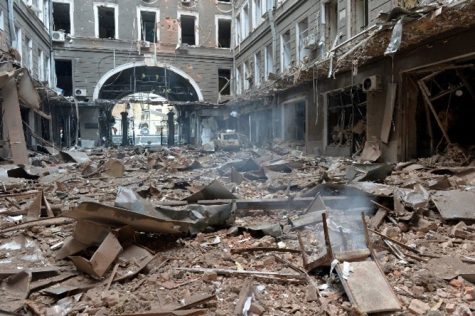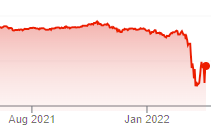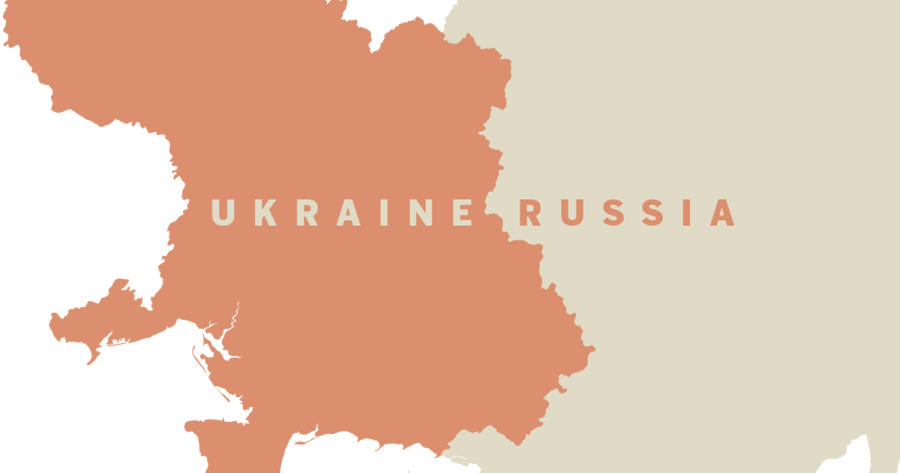The Russian-Ukrainian War – The Facts and How it Started
March 22, 2022
The collapse of the Union of Soviet Socialist Republics (USSR) in 1991 brought independence to 15 countries, two of which were Ukraine and Russia. As a result, there were tensions between the newly free countries and Russia, since Russia was the largest country to be part of the USSR.
In 2008, Ukraine wanted to initiate ties with NATO, the North Atlantic Treaty Organization, whose purpose was to defend its member nations from potential threats by communist-ruled countries. Yet, in 2010, the then Ukrainian President Viktor Yanukovych preserved the country’s non-alignment status and NATO ties were broken off.
A few years later, in February and March of 2014, a conflict between Russia and Ukraine arose when Russia seized Crimea from Ukraine. This resulted in the EU (European Union) and U.S. imposing sanctions on Russia regarding the illegal annexation of Ukrainian territory. In July 2015, the Russian Prime Minister, Dmitry Medvedev, stated that Crimea has fully integrated into Russia.
The following year, Ukraine reported ‘increased military’ existence along the Crimean border. This was starting to worry Ukraine since Crimea is directly below it, and if Russian military presence continues to increase, it could lead to a concerning threat.
On December 7, 2021, the current U.S. President, Joe Biden, and current Russian President Vladimir Putin engaged in a conversation over the phone for what was said to be ‘two hours’ where President Biden mentioned that he would enforce sanctions on Russia if the Kremlin (Russia’s equivalent to the U.S. White House) declared its forces in Crimea to enter Ukraine.
10 days after the call, Russia forcefully demanded that NATO deny membership to Ukraine and the other former Soviet countries. Russia also wanted NATO to remove all military activity in Ukraine and Eastern Europe.
The U.S. President guaranteed to the now Ukrainian President, Volodymyr Zelenskyy, that if Russia attempts an annexation on Ukraine, that the U.S. will respond swiftly.
What is Happening Currently
On February 24, 2022, Russia launched its invasion of Ukraine. Since the first attack, Ukrainian citizens fled to neighboring countries offering relief and refuge, such as Poland, Slovakia, Hungary, Romania, and Moldova. Russia’s military is attacking Ukraine from the air and on the ground, bombing cities of importance in Ukraine.

The capital of Ukraine, Kiev, was encircled by Russian military on March 1st, who are continuing to bomb the city. The Ukrainian forces are defending their homeland, showing their pride and nationalism for their country. March 2nd came with the occupation of Kherson, a southern city, in which Russia engaged Ukrainians in a ground fight for several hours. Kherson is an important city because ‘it connects the Crimean Peninsula to the rest of Ukraine’ as stated by Republic World. On the same day, Russian forces continue to bomb Ukraine’s second-largest city, Kharkov. This city is mostly filled with Russian speakers, which is a main target for Russia to occupy. This continues to be the outcome currently. Additionally, on March 16, residencies and hospitals were bombed just near the capital of Ukraine.
Q & A with West Social Studies Teachers
I interviewed Social Studies teachers Mr. Klein, Mr. Mancini, and Mr. Layton about this current conflict and asked them the following questions:
Q1: Do you think the sanctions imposed on Russia are appropriate or should NATO countries impose additional penalties?
Upon asking, both Mr. Klein and Mr. Mancini stated that Russia should be hit with more sanctions than those originally in place. Mr. Klein geared towards economics and specifically said, “…in terms of cutting off some Russian banks, it should be all Russian financial activity…” while Mr. Mancini went a different route with saying how given the conflict and looking at it, he would do more, but he would have to see all the sanctions in a list to make an accurate decision. These answers both correlate with the idea of imposing additional sanctions but in a different context. Mr. Layton, however, went the oil route to answering this question and said that if the U.S. is looking to go elsewhere (than Russia) for oil distribution and “maximize pressure of Putin,” then additional sanctions should be applied.
Q2: Since the US has made the decision to not purchase and support the import of oil from Russia, how will the US keep up with the demand of oil internally?
With this question, Mr. Layton and Mr. Mancini referenced the State of the Union Address, spoken by President Biden on March 1. Mr. Layton thinks that the U.S. should “tap into its own reserves” and consider other markets globally. He also said that the U.S. currently imports the most oil from Canada than any other country, so he believes that the government will try to import even more from there. Mr. Mancini referred to OPEC (Organization of the Petroleum Exporting Countries) and stated that those countries might have to start producing even more oil. Opposite of this, Mr. Klein considers that the Russia conflict does not affect the gas prices at all and that companies are increasing the prices as a result of the conflict, but he still did refer to OPEC and saying that they will increase production.
Q3: How do you see this conflict being resolved and do you think Ukraine will join NATO in the future?
Each teacher had a different response to the question: Mr. Klein recalled many options the conflict could turn, depending “how much pressure China puts on Russia to stop” or the “financial hit oligarchs take…may have to redirect or remove Putin.” He says that if Russia continues to expand the war, then NATO will probably join in militarily and Ukraine will have to ask to join NATO. Mr. Mancini voiced his opinion with saying that he sees it being resolved “via some sort of negotiation” since the Ukrainians are resisting much more than the Russians accounted for. Mr. Layton, on the other hand, thinks that it might turn into a larger conflict, involving more countries on a global scale.
Q4: a) How is this conflict going to affect Russia’s economy? b) And how do you think this will affect Europe as a whole?

Based on the responses, all three teachers agreed that the Russian economy has tanked and that it has a dense effect on the ruble (Russian currency). As stated by Mr. Layton, the ruble is not equivalent to one US penny. He’s right: currently, 1 Russian Ruble is equivalent to 0.009 United States Dollar. To put things in another perspective, 105 Russian Rubles is equal to 1 United States Dollar. Mr. Klein points out that the Russian people are willing to protest because Russia is “funneling money into your [ Russia’s] military….” In terms of Europe, Mr. Mancini says that since Russia is Europe’s largest oil producer, Europe is going to have to find someplace else to be reliant on which is a drastic change. Mr. Klein believes that Europe is going to increase the cost of manufacturing and transportation, which, by default, results in inflation.
As of March 17, Ukrainians have continued to resist the Russian troops from conquering their motherland.
Further Information:
Russian forces invade Ukraine (cnbc.com)
Russia attacks have targeted 14 regions in Ukraine (newsnationnow.com)
